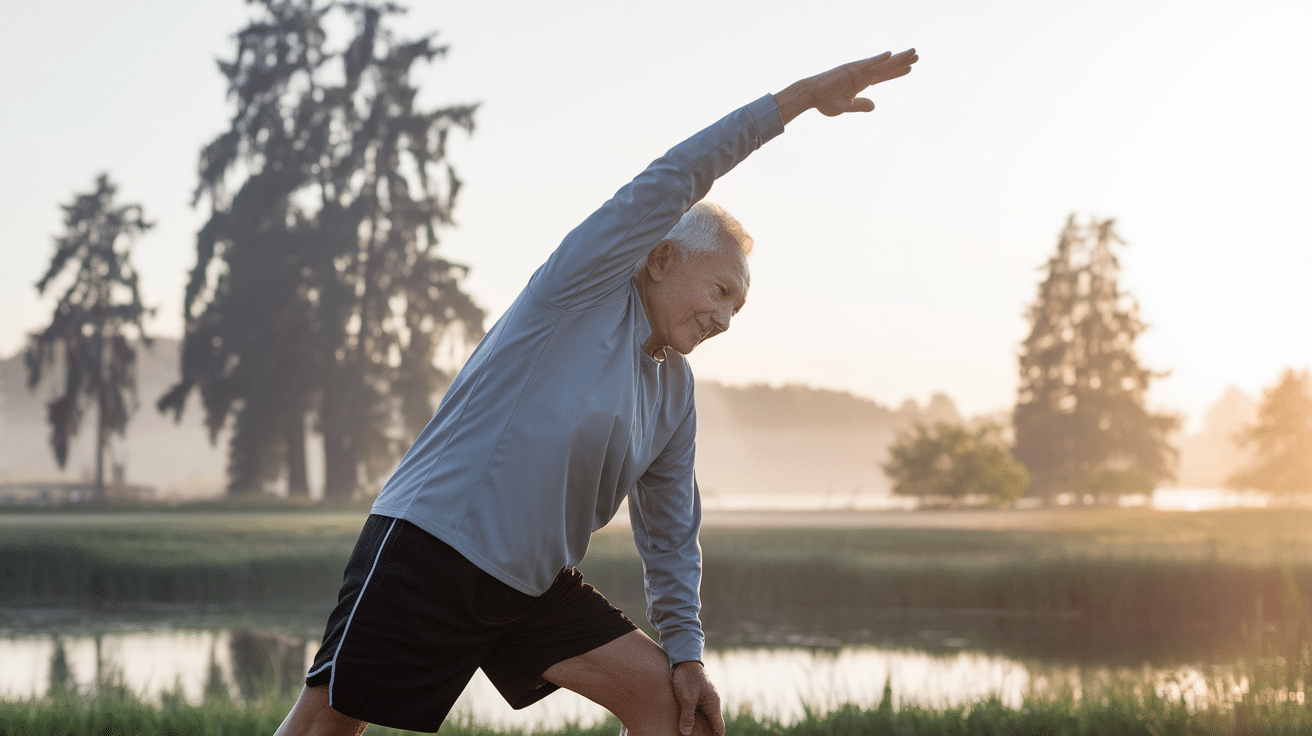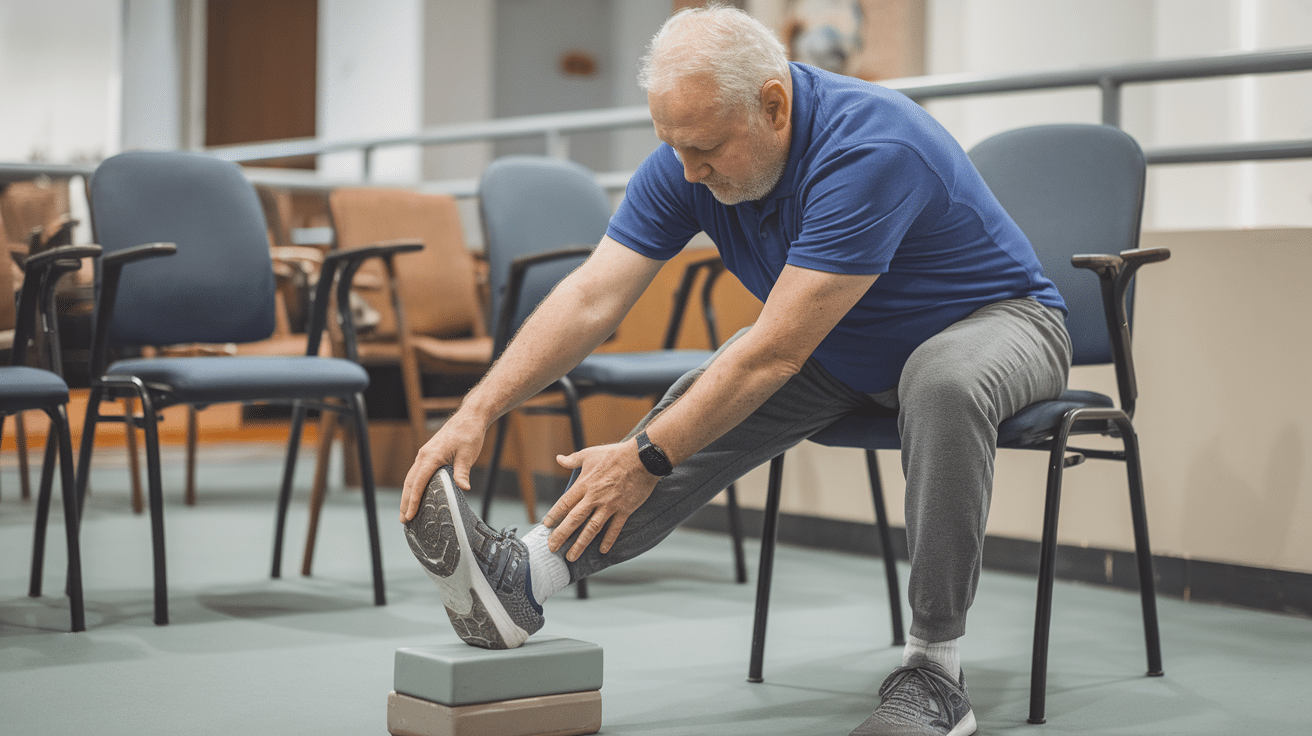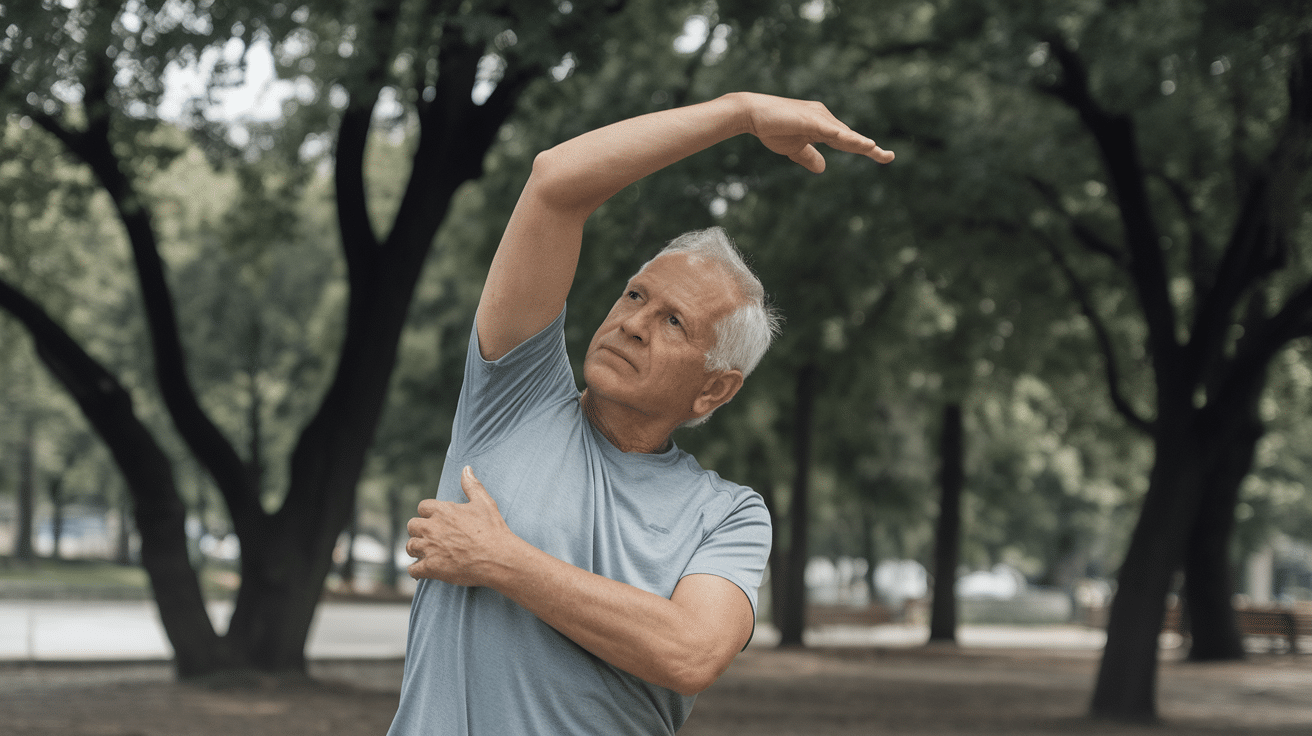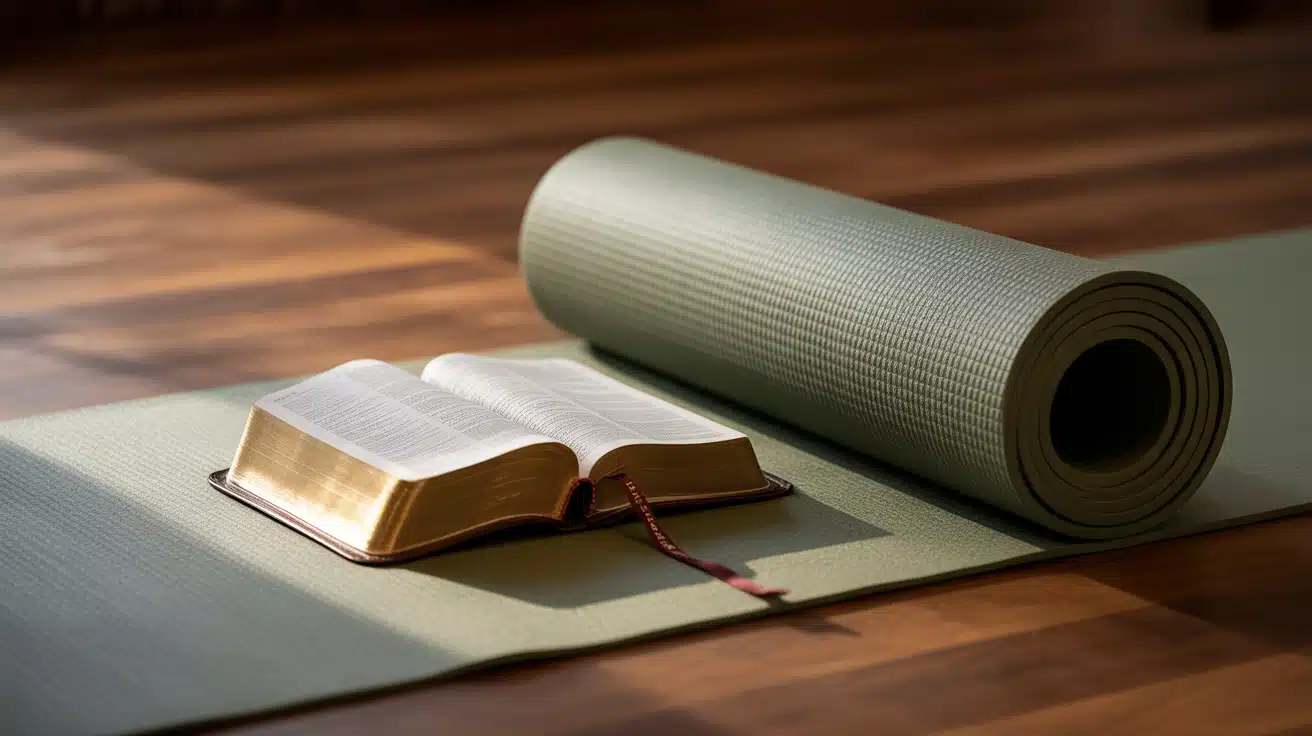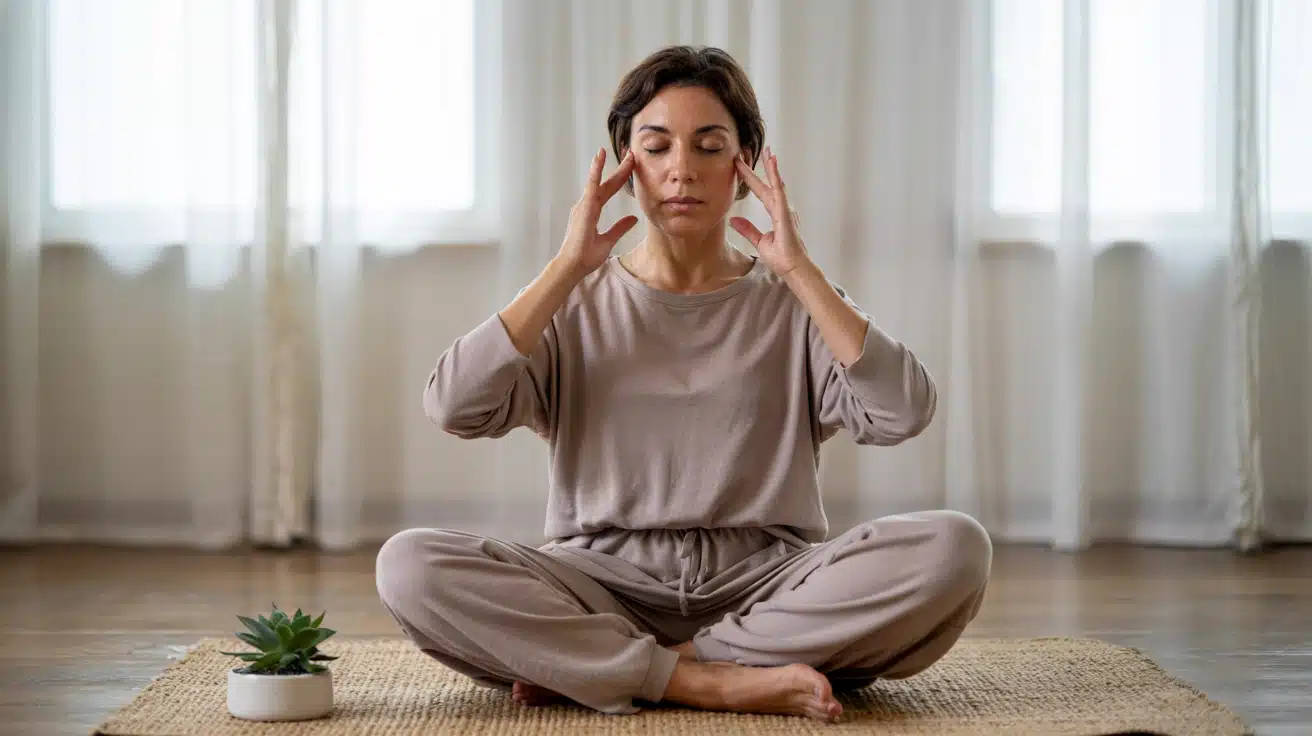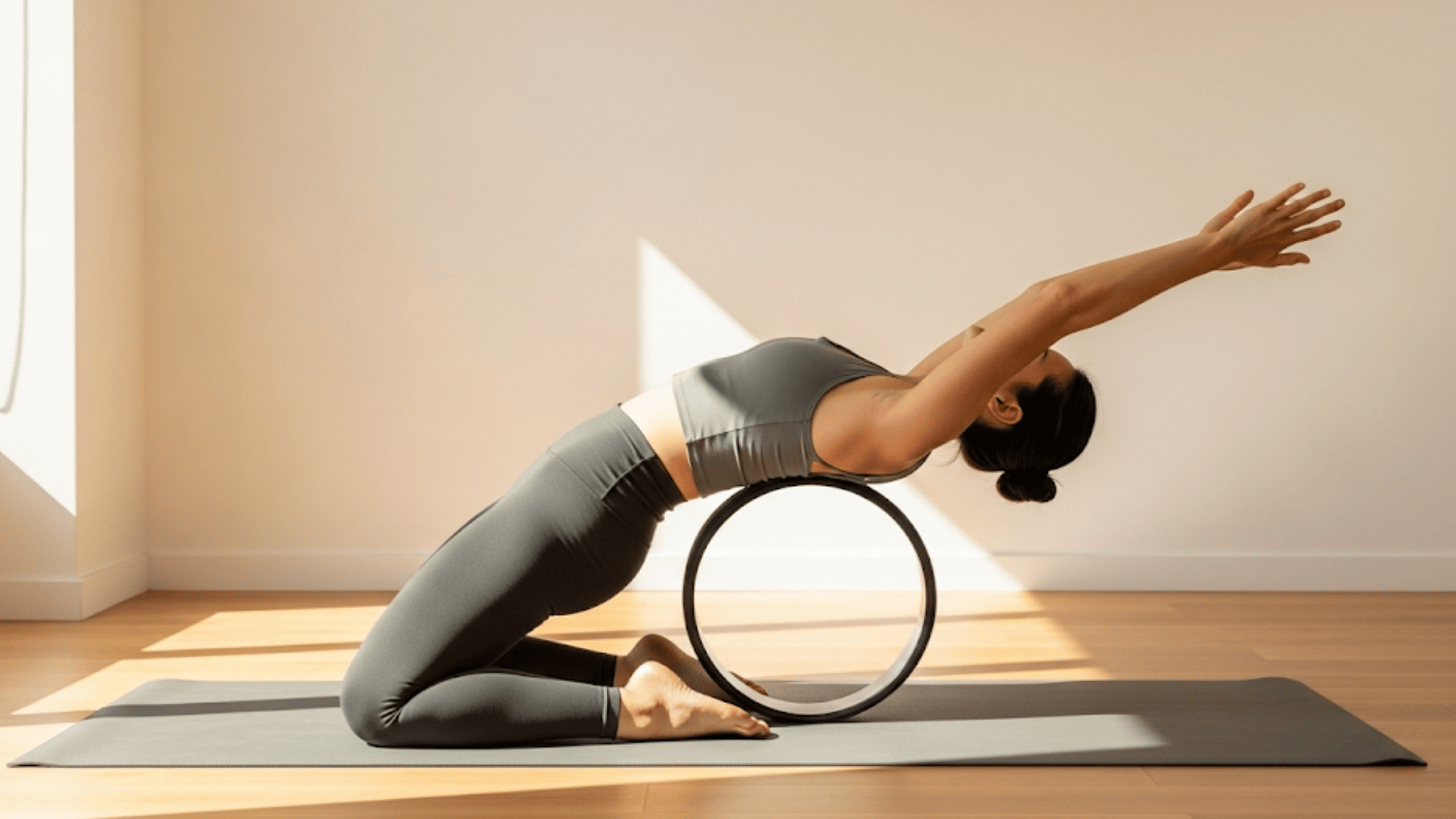Are you tired of waking up with stiff joints and achy muscles that make getting out of bed feel like a challenge?
Morning stiffness doesn’t have to control your day or limit your activities. Simple stretching exercises can make a real difference in how you feel and move throughout the day.
The good news? A practical solution exists that takes just minutes each morning and can be done from the comfort of your own home.
I’ve compiled effective stretches specifically designed for seniors that require no special equipment. You can perform these exercises right from your chair or bedside, making them accessible for all fitness levels.
Let me guide you through these beneficial stretches that will help change your mornings from sluggish to strong, enhancing your daily independence and overall well-being.
Why Morning Stretching is Essential for Seniors?
Morning stretching serves as a refreshing foundation for seniors to start their day with enhanced mobility and reduced stiffness. Stretching exercises are a great way for older adults to keep fit and healthy, bringing increased control, flexibility, and strength to their muscles and joints.
Some of these stretches also help to alleviate muscle pain, joint inflammation, and swollen ankles in older people.
Key benefits:
- Enhanced daily independence – Staying healthy will ensure they lead independent lives, where they can carry out their daily activities conveniently.
- Fall prevention – Stretching exercises play a crucial role in fall prevention by helping you maintain your balance and overall strength.
- Improved blood sugar control – Stretching exercises can help regulate blood glucose levels, and they can even improve mental health.
- Muscle and joint maintenance – Stretching exercises can help regulate blood glucose levels and play a crucial role in maintaining mobility at an older age
There is rarely a more refreshing way for them to start their day than with stretches, making morning routines both practical and energizing for senior health and wellness.
Stretching Guidelines Before Beginning Morning Exercise
Before starting any stretching routine, seniors should follow essential safety guidelines to maximize benefits and prevent injury.
Make sure to listen to your body as it is much more sensitive to slow movements than in your younger days. The goal here is not to “feel the burn,” but to gently bring muscles back to regain strength.
| Guideline | Description |
|---|---|
| Warm-Up First | Make sure to walk around for a few minutes before stretching to ensure your muscles are loose and warm. Note that the stretches themselves are not the warm-up. |
| Mind Your Breathing | Remember to pay attention to breathing throughout the stretches. During exercise, it’s easy to forget and not realize you are holding your breath. |
| Listen to Your Body | You should not be getting any pain during or after the exercise. A little bit of soreness is ok. |
| Start Gradually | Slow and steady! You will get there with consistent, progressive movement rather than overexertion. |
Note: Talk to your doctor before you start a new stretching routine to lower your chances of getting injured.
12 Effective Morning Stretches for Seniors
Start your day with renewed vitality through these gentle yet effective stretches designed specifically for older adults.
These simple exercises enhance flexibility, reduce stiffness, and promote better mobility, helping maintain independence and overall well-being.
A. Lower Body Stretches
1. Seated Knee to Chest
This lower body stretch enhances mobility in the hips and knees while improving lower back flexibility. Sit comfortably on the chair and grasp your right knee.
Gently and slowly pull your right knee towards your chest until you feel a stretching sensation. Hold this position for 10 to 30 seconds, then slowly move the leg back to the floor and repeat with the left leg. No standing required.
2. Standing Quadriceps Stretch
This vital exercise helps older people remain flexible and mobile by targeting the quadriceps located in the upper leg. Use a chair back for support as you’ll be balancing on one leg.
Bend the left knee and use your left hand to grab your ankle. Gently pull your left foot towards your buttocks and hold for up to 30 seconds. Release and repeat with your right leg.
3. Hamstring Stretch
This stretch focuses on the hamstrings while also stretching the lower back, helping reduce stiffness and enhancing mobility. Sit on a flat, even surface and stretch out one leg.
Lean forward gradually, reaching for your ankle, thigh, or knee, depending on the flexibility. Be careful not to hyperextend the hamstrings. Hold for 10 to 30 seconds before returning to natural sitting position, then repeat with the alternate side.
4. Soleus Stretch (Calf Stretch)
This simple stretch targets your calves and improves lower body flexibility by working the deep calf muscle and overall leg functionality. Stand up and face a wall, placing both hands on the wall for support.
Place your right foot in front of your left foot. Slowly bend your right knee until you feel a stretch in your lower left leg, keeping your left heel on the floor. Hold for 10 to 30 seconds.
5. Standing Hip Flexor
This stretch alleviates tightness or pain in your hips effectively. Grab a sturdy chair and stand with your feet facing the back of the chair, positioning yourself far enough to lift your leg up.
While holding onto the chair with both hands, step your left leg back and keep your right knee bent. Stretch your torso up straight and feel the stretch in the front of your left hip. Hold for 10 to 15 seconds.
6. Lunge in a Chair
This excellent exercise promotes hip flexibility and muscle strength, though it can be complex for older people.
Place two chairs about 1 meter apart facing the same direction. Step a few feet in front of the chair behind you and rest your shin on the seat with your knee extending beyond the front edge.
Bend your front knee slightly while pushing your hips forward and down. Maintain this position for 10 to 30 seconds.
B. Upper Body Stretches
7. Overhead Side Stretch
One of the most effective morning stretches for the back and upper body, this standing side stretch eases the abdomen, back, and shoulder muscles.
Stand with feet shoulder-width apart and lift your arms above your head, interlocking your fingers to prevent them from breaking apart.
Ensuring your torso is aligned, gently lean to your left and hold for 10 to 30 seconds. Return to center and repeat on the right side.
8. Shoulder Stretch
This simple shoulder stretch loosens up your shoulder joint, alleviating muscle pain and preventing deterioration. Stand or sit straight up as tall as you can.
Grab one arm with your opposite hand and slowly, gently pull your arm across your chest until you feel a stretch in your shoulder.
Keep your elbow below shoulder height throughout the stretch. Hold this position for 10 to 30 seconds, then repeat with your other arm.
9. Tricep Stretch
Designed to stretch your arms, this exercise also improves shoulder mobility and can be performed standing or sitting. Stand or sit tall with feet hip-width apart.
Raise both arms over your head, bending your right arm so it’s positioned behind your head.
Place your left hand on your right elbow and gently pull your elbow down towards your back until you feel a stretch. Hold for 10 to 30 seconds, then repeat with the left arm.
10. Seated Shoulder Stretch
Perfect for upper body flexibility, sit upright in a chair with minimal support from the chair’s back. Bring one arm across your chest using your opposite hand for support.
Try to bring your inner elbow as close to your chest as you comfortably can. This stretch helps improve shoulder mobility and can alleviate tension in the upper body.
Hold the position for several seconds before switching to the other arm.
11. Chin Drop
This exercise can be performed sitting or standing and helps with neck and upper back flexibility. With your arms in front of you, place your elbows and palms together.
Turn your hands so your palms face you, then place your palms on top of your head.
Without pushing with your hands, gently lower your chin to your chest. Hold this position for several seconds, then return to an upright position for neck relief.
12. Arm Opener
This stretch helps open up the chest and shoulders while improving posture. Stand up straight with your feet shoulder-width apart. Lace your fingers together behind your back and let them relax against your tailbone with your knuckles facing downward.
Without bending, slowly lift your arms away from your tailbone. Keep your interlaced hands as far from your back as you comfortably can, holding the position for several seconds.
Note: Always warm up with light walking for 2-5 minutes before stretching. Remember that consistency and progression with exercise are key for optimal results!
Safe Morning Stretching Tips for Seniors
- Modify based on your mobility level – Use chairs, walls, or resistance bands to assist with stretches if you have balance issues or limited flexibility. There’s no shame in adapting movements to work for your body.
- Hold stretches for the right duration – Aim for 15-30 seconds per stretch rather than bouncing or forcing movements. Static stretches are safer and more effective than dynamic bouncing motions.
- Stay hydrated before and after – Drink water before your stretching session and keep a water bottle nearby, as dehydration can increase muscle stiffness and cramping risk.
- Create a consistent routine – Try to stretch at the same time each morning when possible. Your body will adapt better to a regular schedule, and you’re more likely to stick with it.
- Focus on problem areas first – Pay extra attention to commonly tight areas like neck, shoulders, lower back, and hips. These tend to stiffen overnight and benefit most from morning attention.
- Use gentle movements initially – Start with simple neck rolls, shoulder shrugs, and ankle circles before progressing to deeper stretches. This helps assess how your body feels each day.
Conclusion
Incorporating these morning stretches into your daily routine is more than just an exercise habit. It’s an investment in long-term health and independence.
Each gentle movement works to counteract the natural stiffness that comes with aging, helping you maintain the mobility needed for everyday activities.
Remember, the key to success lies in consistency rather than intensity. Start with just a few stretches that feel comfortable, gradually building your routine as the body adapts.
Listen to your body’s signals, warm up properly, and don’t hesitate to modify any exercise to suit your current abilities.
Start where you feel comfortable, and allow these movements to naturally become part of your morning routine.

